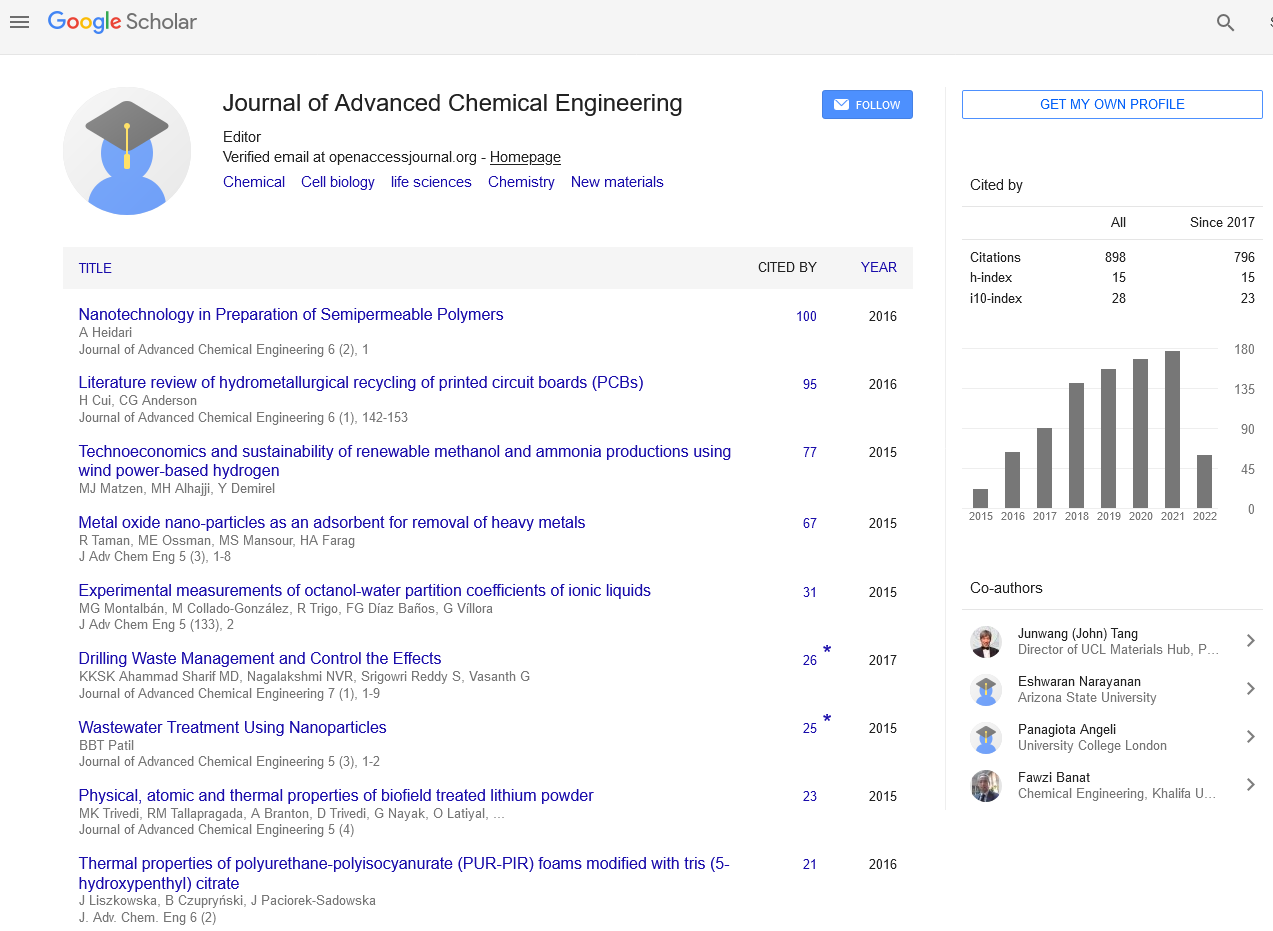Indexed In
- Open J Gate
- Genamics JournalSeek
- Smithers Rapra
- RefSeek
- Directory of Research Journal Indexing (DRJI)
- Hamdard University
- EBSCO A-Z
- OCLC- WorldCat
- Scholarsteer
- Publons
- Geneva Foundation for Medical Education and Research
- Google Scholar
Useful Links
Share This Page
Journal Flyer

Open Access Journals
- Agri and Aquaculture
- Biochemistry
- Bioinformatics & Systems Biology
- Business & Management
- Chemistry
- Clinical Sciences
- Engineering
- Food & Nutrition
- General Science
- Genetics & Molecular Biology
- Immunology & Microbiology
- Medical Sciences
- Neuroscience & Psychology
- Nursing & Health Care
- Pharmaceutical Sciences
Abstract
Removal of Orange-G, Vat Yellow, Erythrosine Dyes from Synthetic Wastewater by Electrocoagulation and Nanofiltration
Uzoh Francolins Chigozie and NwabanneTagbo Joseph
Efficiency of electrocoagulation and nanofiltration in removing color from synthetic wastewater were investigated. Three representative dye molecules were selected for the synthetic dye wastewater:Azo dye (Orange-G dye), a synthetic dye (Erythrosine) and a Vat dye (Vat yellow). Iron electrode was use as a sacrificial anode in the study. The influence of electrolysis time, operating current density, initial pH, initial dye concentration and temperature on process performances was investigated. Experiments were conducted to find the desired conditions for removal of particular concentration of the dyes. The results showed that 99.958% of Orange-G, 99.854% Of Erythrosine, 85.956% Vat yellow was decolorized for initial dye concentration of 100 mg/l with the current density of 1559 A/m2, electrolysis time of 25 minute and initial pH of 10. The electrochemical technique showed satisfactory color removal efficiency and reliable performance in treating the dye types. Electrode mass loss and energy consumed were also calculated.


